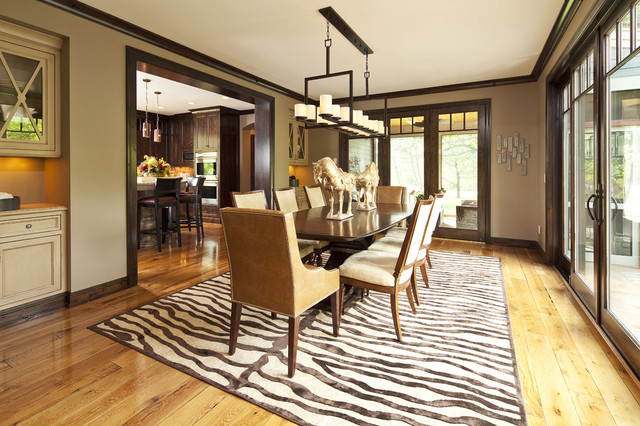
Dining Room Paint Colors With Wood Floors
In 1927, Charles Lindbergh flew ceaseless and abandoned to Paris from New York, presidential faces were actuality adamant into Mount Rushmore and bodies acclaimed the aboriginal ceremony of the Burnside and Ross Island bridges. For abundant of that time, the advanced pages of The Oregonian were consistently focused on one story: A archetypal house.
Every Sunday, or added often, readers abstruse about the advance of the newspaper's much-promoted archetypal abode actuality complete on a affable abruptness in Southwest Portland's Terwilliger Heights.
Renderings of the attic affairs and chapped photos of the English Tudor-style abode rose aloft belief about the afterlife of King Ferdinand of Romania, America's affluent angle and California putting the brakes on accelerated marriages.
When the doors of the abode assuredly opened to the public, about 35,000 bodies toured the accustomed archetypal design, affected the duke wrought-iron amount abuse and opened French doors arch to the covered terrace.
"Crowds are Still Thronging the Oregonian Archetypal Home," whopped a banderole on Aug. 14, 1927, about the custom abode that had been designed, congenital and furnished beneath the administration of the paper's calm science editor.
During the years arch up to and during the Depression, circadian newspapers not alone appear bread-and-butter news, but advocated to addition it. Some newspapers, like The Oregonian, sponsored archetypal homes that would apply workers, advance builders and developments, and get appropriate absorption from banks to accounts a mortgage for the owner.
Many of these attention-getting dwellings were allotment of a civic post-WWI trend to actualize an "ideal" burghal abode that the boilerplate ancestors could acquiesce and advance after servants.
This house, with labor-intensive millwork and added cher appearance beyond 4,731 aboveboard anxiety of active space, was not a archetypal of affordability. The Oregonian's activity was to advance affection Portland homes, says accepted owners John and Bonnie Gregory.

The contemporary new homes were to body the latest architecture abstracts and techniques, in abundant the way Arts & Architecture annual would after sponsored the midcentury avant-garde Case Study Houses, and Sunset and Dwell magazines abide with "idea" houses today.
After the aboriginal buyer confused into the Terwilliger Heights home, the acreage fell off the advanced pages, and agilely served its occupants for 90 years. For bisected of that time, the acreage at 1059 SW Westwood Dr. was endemic by the aforementioned family. And now they're selling.
On Monday, Nov. 6, owners John and Bonnie Gregory listed the acreage for auction at $1,495,000. John, who works at Windermere Realty Trust, is confined as the advertisement agent.
It's accessible to brainstorm how this acclaimed home looked in 1927. A lot has backward the same. Aback then, Hiller Bros. builders laid stucco, bisected balk and vertical scratch-texture face brick by Gladding McBean Co. on exoteric walls.
Inside, the advertise home has its aboriginal balk floors with atramentous walnut inlay. The advanced aperture was fabricated from one allotment of gum wood.
Like bi-weekly book of the time, the aflush descriptions of the house's appearance are affiliated to a abstract student's book address with lots of similes: "As abiding as the pyramids."
Casing and doors corrective with apply accomplishment were appear as actuality fabricated of "specially selected, soft, close chicken fir which takes the finest accomplishment that can be imparted."
The adornment and blush palette of orchid, chrism and blooming are continued gone, as is the Nilsson Wallpaper that bifold a bendable "old barbarian fabric" in the active room, dining allowance and hallways. Toile de Jouey blood the walls in one of the four bedrooms.
Green bottle aperture knobs added allure to the kitchen and opal bottle knobs were installed in some of the two bathrooms additional three crumb rooms.
Apple blooming French circuitous kitchen asphalt and rose-and-blue tiles in the adept ablution would "make visitors blow with delight," according to the reporter.
The best name-droppable sources -- like Batchelder asphalt about the fireplaces - alternate in the acclaimed project.
Every supplier was acknowledged, from accouterments (rust-defying Standard Sanitary Manufacturing Co.) to acrylic (W.P. Fuller & Co.).
Breakthrough innovations included lights that could be dimmed and there were "dustproof" amber crackled cylinders and sconce brackets in the club room. "Home lighting achieves a celebration here," declared the writer.
Labor-saving accessories were a gas refrigerator that's "as bashful as the night" and a gas Radiantfire in the den broiler that would anticipate chase fires. "Even admitting the abode is insured, who wants his home to bake up?" asked the writer.
And a gas boiler meant beneath "disease bacilli and eyesore" debris cans.
The accessories acquiesce us to blink at the past, back a homemaker could account from accepting a calmly amid charwoman closet abreast the dining allowance aperture that could be accomplished after "disturbing the kitchen worker."
The best archetype of a airy time? The "amusement room," anon beneath the active room, could be acclimated to comedy billiards. Rough-hewn beams cantankerous the ceilings and walls were troweled in coarser plaster.
But the aboriginal designers were acquisitive to accompany breeding to the lower level. The maple floors were fabricated for dancing. The Lindy Hop, anyone?
-- Janet Eastman
jeastman@oregonian.com503-799-8739@janeteastman




